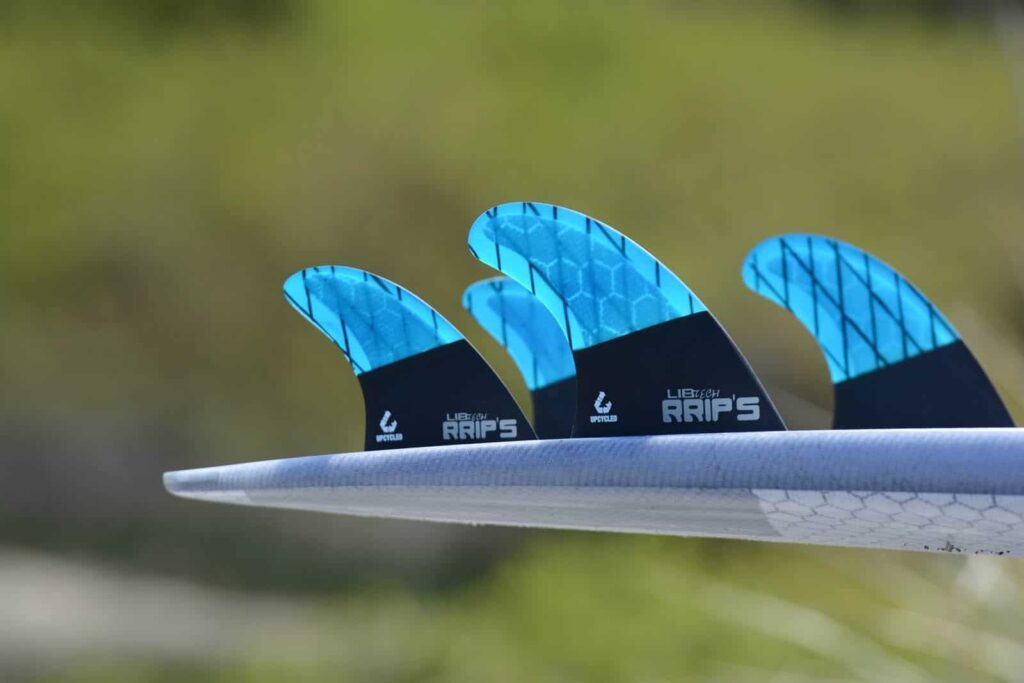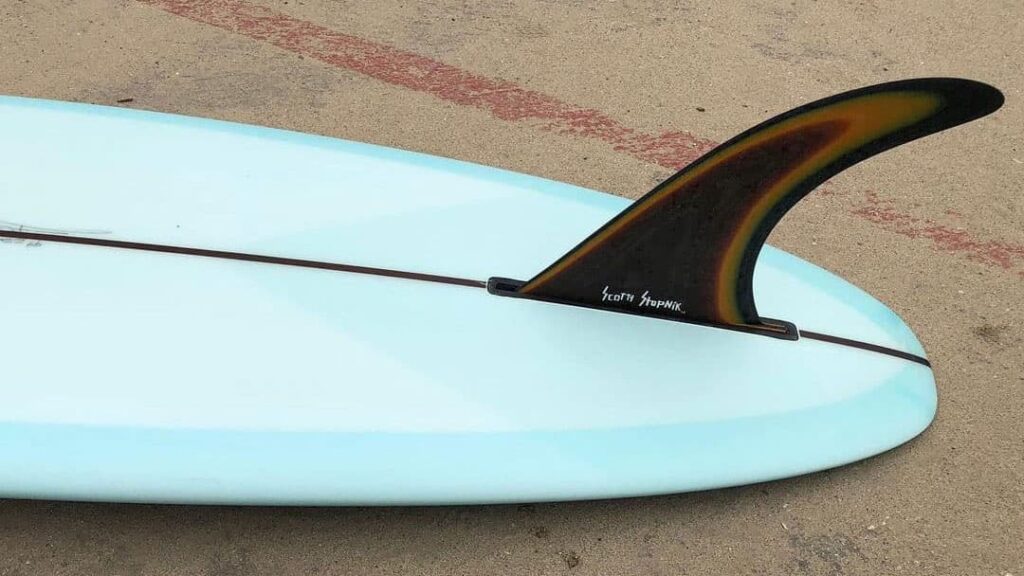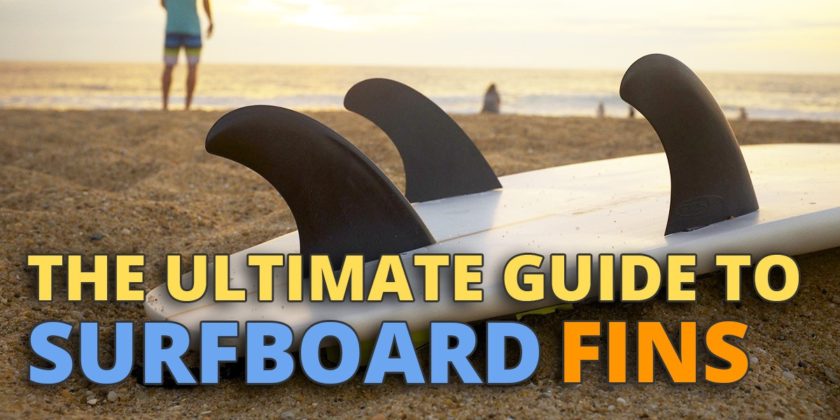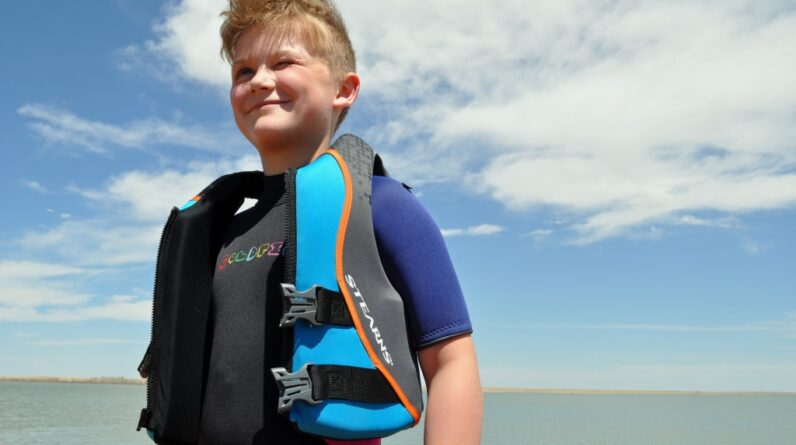
Surfing is an exhilarating sport that requires skill, balance, and the right equipment. One crucial component of a surfboard that often goes unnoticed, but plays a significant role in your surfing experience, is the fins. Attaching and adjusting your surfboard fins correctly can vastly improve your performance on the waves. Whether you’re a seasoned surfer or just starting out, this ultimate guide will provide you with easy-to-follow steps to ensure your fins are securely attached and perfectly adjusted for maximum control and maneuverability. Get ready to catch those waves like a pro!

This image is property of surfmentor.com.
Choosing the Right Fins
Understanding fin setups
When it comes to surfboard fins, understanding the different fin setups is crucial. The two main types of fin setups are the thruster (three fins) and quad (four fins). The thruster setup is the most common and provides a balance of speed, control, and maneuverability. On the other hand, the quad setup offers increased speed and stability, making it ideal for fast and powerful waves.
Selecting the right fin size
Choosing the right fin size depends on various factors such as your weight, surfing style, and wave conditions. Larger fins provide more stability and control, while smaller fins offer increased maneuverability. As a general guideline, beginners and larger surfers may opt for larger fins, while smaller fins may be suitable for advanced surfers or those looking for a looser feel.
Considering different fin materials
Fin materials can significantly impact your surfing experience. Fiberglass fins are the most common and provide a good balance of flexibility and response. They are suitable for most surfers and conditions. Alternatively, composite fins offer enhanced durability and are often preferred by surfers who frequently encounter reef breaks or rocky bottoms. Carbon fiber fins are lightweight and provide excellent responsiveness, making them ideal for high-performance surfing.
Choosing the correct fin template
The fin template refers to the shape and design of the fin. There are various templates available, each offering different characteristics. The rake (angle of the fin in relation to the base) affects the hold and control of the board. A more raked fin provides better hold, while a less raked fin allows for quick turns. The sweep (curve of the fin from the base to the tip) influences the turning ability of the board. A more swept-back fin allows for tighter turns, while a less swept-back fin provides better stability.
Attaching the Fins
Preparing the fin boxes
Before attaching the fins, ensure that the fin boxes are clean and free from debris. Use a fin key or screwdriver to remove any existing screws or plugs from the boxes. Clean the boxes thoroughly with fresh water and inspect them for any damage or signs of wear. It is important to have a solid and secure foundation for your fins to ensure optimal performance.
Checking fin compatibility
When attaching fins, it is crucial to ensure that they are compatible with your surfboard’s fin boxes. Different fin systems such as FCS or Futures have specific dimensions and attachment methods. Check the packaging or labels of your fins to ensure compatibility. If you are unsure, consult with a knowledgeable surf shop or experienced surfer for advice.
Inserting the fins into the boxes
Once you have determined the compatibility of your fins, carefully insert them into the fin boxes. Align the base of each fin with the corresponding box, ensuring that they are positioned correctly. Gently push the fins into the boxes, applying equal pressure on each side. The fins should fit snugly without any wobbling or looseness.
Securing the fins with screws
Once the fins are properly inserted into the boxes, it is time to secure them with screws. Place the provided screws into the holes on each fin’s base. Ensure that the screws are inserted straight and align with the threading in the fin boxes. It is essential to use the correct screw size for a proper fit. Tighten the screws until they are snug but be careful not to overtighten, as this can damage the fin boxes.
Tightening the screws
To ensure the security of your fins, it is crucial to tighten the screws properly. Use a fin key or screwdriver to tighten the screws, applying equal pressure to each screw. Start with a loose fit and gradually tighten the screws in a crisscross pattern, alternating between screws on the same fin and screws on different fins. This ensures even tension and prevents any unwanted movement or instability.
Adjusting Fin Placement
Understanding the importance of fin placement
Fin placement plays a significant role in the performance of your surfboard. By adjusting the placement of your fins, you can control the board’s stability, maneuverability, and overall feel. It is essential to understand how different fin placements affect your surfing style and the specific wave conditions you will be riding.
Finding the optimal position for your fins
The optimal fin placement varies depending on factors such as surfboard design, wave conditions, and personal preferences. As a general guideline, placing the fins closer to the tail provides increased stability and drive, making it suitable for larger waves or riders who prefer a more powerful surfing style. Conversely, moving the fins closer to the center of the board enhances maneuverability and looseness, making it ideal for smaller waves or riders who prefer quick and agile turns.
Adjusting the fin toe-angle
The toe-angle refers to the angle at which the fins are set in relation to the stringer of the surfboard. To adjust the toe-angle, loosen the screws holding the fins in place. Gently rotate the fins clockwise or counterclockwise to achieve the desired angle. Experiment with different toe-angles to find the setting that suits your surfing style and wave conditions.
Fine-tuning the fin cant
The fin cant refers to the angle at which the side fins are positioned in relation to the bottom surface of the surfboard. A more upright fin cant provides increased control and stability, while a more laid-back cant allows for quicker and smoother turns. Loosen the screws on the fins and adjust the cant by rotating the side fins in or out. Fine-tune the cant to achieve the desired balance between control and maneuverability.
Considering the effect of moving fins forward or backward
Moving the fins forward or backward along the stringer of the surfboard can significantly impact its performance. Placing the fins further forward enhances the board’s drive and stability, making it suitable for larger, more powerful waves. Conversely, moving the fins further back increases maneuverability and responsiveness, making it ideal for smaller, more playful waves. Experiment with different fin positions to find the sweet spot that suits your surfing style and the specific conditions you’ll be riding.
Fine-Tuning Fin Performance
Experimenting with different fin setups
Surfing is all about experimentation, and finding the right fin setup is no different. Don’t be afraid to try different fin configurations to discover what works best for you. Experiment with various types, sizes, materials, and templates of fins to determine which combinations provide the desired performance and feel.
Changing fins for specific wave conditions
Wave conditions can vary significantly, and having the ability to change your fins accordingly can greatly enhance your surfing experience. For larger, more powerful waves, consider using larger and more stable fins to handle the increased speed and force. For smaller, more mellow waves, smaller and more maneuverable fins can provide enhanced agility and responsiveness.
Using different fin configurations for various surfing styles
Different surfing styles require different fin setups. If you prefer a more aggressive and powerful style, consider using a thruster setup with larger side fins for increased hold and stability. If you enjoy a more laid-back and playful surfing style, experimenting with a quad setup or smaller, more pivoting fins can provide the desired looseness and maneuverability.
Adjusting fins for better maneuverability
If you find that your surfboard feels sluggish or unresponsive during turns, adjusting the fins may help improve its maneuverability. Experiment with moving the fins closer to the rail or closer to the center of the board to find the right balance between stability and maneuverability. Small adjustments can make a significant difference in how your board performs.
Optimizing stability with fin adjustments
If your surfboard feels unstable or difficult to control, fin adjustments can help improve stability. Moving the fins slightly further back or increasing the fin cant can enhance stability without compromising too much maneuverability. It’s all about finding the right setup that provides the ideal balance for your surfing style and wave conditions.

This image is property of cdn.shopify.com.
Maintaining and Repairing Fins
Cleaning the fins after each surf session
Proper maintenance is essential to ensure the longevity and performance of your surfboard fins. After each surf session, rinse the fins thoroughly with fresh water to remove any salt, sand, or other debris. Use a soft brush to gently scrub the fins if necessary. Avoid using harsh chemicals or abrasive materials that can damage the fin’s surface.
Inspecting fins for damage
Regularly inspect your fins for any signs of damage or wear. Look for cracks, chips, or any abnormalities that may affect performance. Pay close attention to the base and tips of the fins, as these areas are more prone to damage. If you notice any significant damage, it may be necessary to repair or replace the fins.
Repairing minor fin damages
Minor damages such as small cracks or chips can often be repaired rather than replacing the entire fin. Use epoxy resin or a specialized fin repair kit to fill in the damaged areas. Follow the manufacturer’s instructions carefully and allow sufficient time for the repair to cure. Sand down the repaired area to match the fin’s shape and smoothness.
Replacing fins when necessary
If your fins are severely damaged, cracked, or cannot be repaired, it may be time to replace them. When choosing new fins, consider your surfing style, wave conditions, and personal preferences. Consult with knowledgeable surfers or visit a reputable surf shop for advice and recommendations. Ensure that the new fins are compatible with your surfboard’s fin boxes.
Storing fins properly
When not in use, it is essential to store your fins properly to prevent damage or misplacement. Keep your fins in a safe and secure location, away from sharp objects or excessive heat. Consider using a fin wallet or bag to keep your fins organized and protected. Avoid placing heavy objects on top of the fins, as this can lead to deformation or warping.
Troubleshooting Fin Issues
Identifying common fin problems
Understanding common fin problems can help you troubleshoot and address any performance issues you may encounter. Some common fin problems include loose or wobbly fins, fin spin-out, and tracking or sliding problems. By identifying the root cause of these issues, you can take appropriate measures to resolve them.
Diagnosing performance issues
If you notice a decline in your surfboard’s performance, it is essential to diagnose the issue accurately. Performance issues can be caused by various factors such as fin placement, fin size, fin type, or even the condition of the surfboard itself. Assess each component and consider making adjustments or seeking professional advice if needed.
Addressing loose or wobbly fins
Loose or wobbly fins can greatly affect the stability and control of your surfboard. If you encounter this issue, check the screws holding the fins in place and ensure they are tightened properly. If the screws are loose or damaged, replace them with new ones. If the fins continue to feel loose, consult with a surfboard shaper or repair specialist to assess the fin boxes and determine if any repair or reinforcement is necessary.
Dealing with fin spin-out
Fin spin-out occurs when the fins lose grip in the wave face and cause the board to slide or spin uncontrollably. This can be caused by several factors such as inappropriate fin size, incorrect fin placement, or excessive speed or force. Experiment with different fin setups and adjustments to find the right combination that provides stable and reliable traction in the wave.
Solving tracking or sliding problems
If your surfboard feels difficult to control, experiences a lack of responsiveness, or slides out during turns, it may indicate a tracking or sliding issue. Adjusting the fin placement or toe-angle can often resolve these problems. Experiment with different fin positions and angles to find the sweet spot that provides better tracking and prevents unwanted sliding.

This image is property of cdn.shopify.com.
Tips for Beginners
Start with a thruster fin setup
For beginners, starting with a thruster fin setup is recommended. The thruster setup offers a balanced combination of stability, maneuverability, and control, making it ideal for learning and progressing. The three fins provide ample hold and traction, allowing beginners to gain confidence and stability while developing their surfing skills.
Experiment gradually with different fin setups
As a beginner, it’s important not to overwhelm yourself with too many fin options right away. Start with a standard thruster setup and gradually experiment with different fin configurations as you progress. Understand the impact of each adjustment and allow yourself time to adapt to the changes. This gradual approach will help you develop a better understanding of how fins affect your surfing.
Consult with experienced surfers or shapers
Seeking guidance from experienced surfers or surfboard shapers can provide valuable insights and recommendations. These individuals have extensive knowledge and experience in fin selection and adjustments. They can provide personalized advice based on your skill level, surfing style, and specific goals. Don’t hesitate to ask questions or seek advice from those with more experience.
Take your time to adjust and test different placements
When adjusting your fins, take your time and be patient. Small adjustments can have a significant impact on your surfboard’s performance. Test each adjustment thoroughly before making additional changes. Spend time observing and analyzing how different fin placements affect your surfing experience. This process of trial and error will help you fine-tune your setup to suit your individual preferences and needs.
Learn from your experience and adapt
Surfing is a constantly evolving sport, and your preferences and skills will change over time. Embrace the learning process and be open to adapting your fin setup as you progress. Learn from each surfing session and adjust your fins accordingly. Your surfing style, wave conditions, and desired performance may change, and it’s important to be flexible and willing to experiment with different setups.
Tools and Equipment
Required tools for attaching and adjusting fins
To attach and adjust your surfboard fins, you will need a few essential tools. These tools typically include a fin key or screwdriver, which is used to tighten and loosen the screws holding the fins in place. It is essential to have the correct size fin key or screwdriver that matches the screws provided with your fins.
Using fin keys for standard fin boxes
For surfboards with standard fin boxes, a fin key is the most common tool used for attaching and adjusting fins. The fin key features a specific design that allows it to fit into the fin screws snugly. It provides the leverage needed to tighten or loosen the screws securely.
Alternative tools for FCS or Futures fin systems
For surfboards with FCS or Futures fin systems, alternative tools are required. FCS fins often come with a specialized key that is designed to fit into the FCS fin screws. This key has a unique shape that matches the head of the FCS screws. Similarly, Futures fins require a specific tool known as a Futures fin key or fin box tool, which is designed to fit the specialized Futures fin boxes.
Essential equipment for maintenance and repairs
Maintaining and repairing your surfboard fins may require specific equipment. A soft brush or sponge is essential for cleaning the fins after each surf session. Epoxy resin or specialized fin repair kits are useful for repairing minor damages or cracks in the fins. Sandpaper or a sanding block can be helpful for smoothing out any repaired areas.
Optional accessories for fin adjustments
Optional accessories can aid in the process of fin adjustments. Fin shims or spacers can be used to fine-tune the fin angle or cant. These small plastic or rubber pieces are inserted between the fin and the fin box to change the angle slightly. Fin templates or angle guides can also be helpful for accurately adjusting and replicating specific fin positions.

This image is property of www.boardcave.com.au.
Safety Considerations
Handling fins with caution
When handling surfboard fins, it is important to exercise caution and be mindful of their sharp edges. Fins can cause injuries if not handled properly. Always hold the fins by the base or the trailing edge to avoid accidental cuts or punctures. When attaching or adjusting fins, consider wearing protective gloves to minimize the risk of injury.
Avoiding fin-related injuries
Surfing involves inherent risks, and it is important to prioritize safety when attaching and adjusting fins. Avoid rushing or forcing the fins into the boxes, as this can lead to finger or hand injuries. Take your time and ensure that the fins are inserted properly and securely. If you are unsure or uncomfortable with the process, seek assistance from a professional or experienced surfer.
Using protective gear when adjusting fins
To minimize the risk of injuries while adjusting fins, it is advisable to wear protective gear such as gloves or finger guards. These can provide an extra layer of protection against accidental slips or cuts. Additionally, wearing a wetsuit or rash guard can protect your skin from any sharp edges on the surfboard or fins.
Being mindful of sharp edges
Surfboard fins have sharp edges that can cause injuries if mishandled. When attaching or adjusting fins, be aware of these sharp edges and avoid placing your fingers or hands in their path. Take extra care when working with the fins to prevent accidental cuts or punctures. Keep the fins away from children and pets to prevent any accidents.
Always assessing surf conditions and risks
Before attaching or adjusting your fins, always assess the surf conditions and consider any risks involved. Surfing in large or powerful waves can increase the likelihood of accidents or injuries. If conditions are challenging or beyond your skill level, it is wise to reconsider attaching or adjusting fins until conditions are more suitable. Safety should always be the top priority.
Conclusion
Attaching and adjusting surfboard fins is an essential skill for every surfer. By understanding fin setups, selecting the right fins, and considering fin placement, you can optimize your surfboard’s performance to suit your individual style and wave conditions. Regular maintenance and troubleshooting fin issues ensure that your fins remain in optimal condition, providing you with years of enjoyable surfing experiences. Remember to prioritize safety, consult with experienced surfers or shapers, and embrace the process of trial and error as you fine-tune your fin setup. So grab your board, attach those fins, and get ready to carve up the waves with confidence!

This image is property of limitstretch.com.






